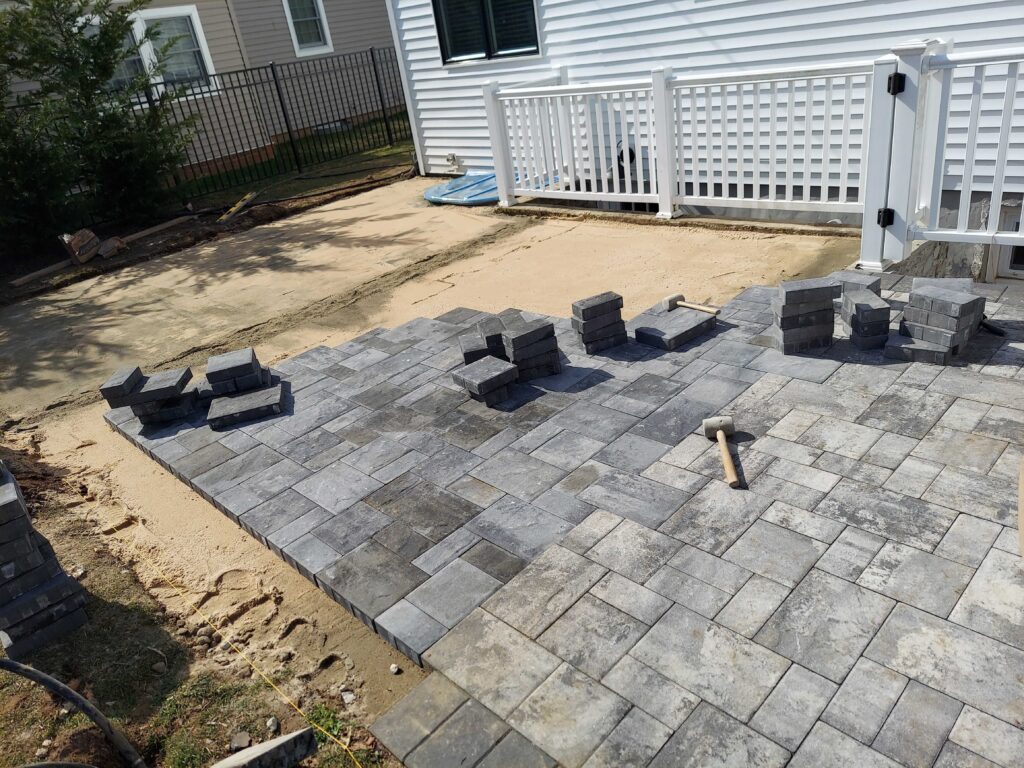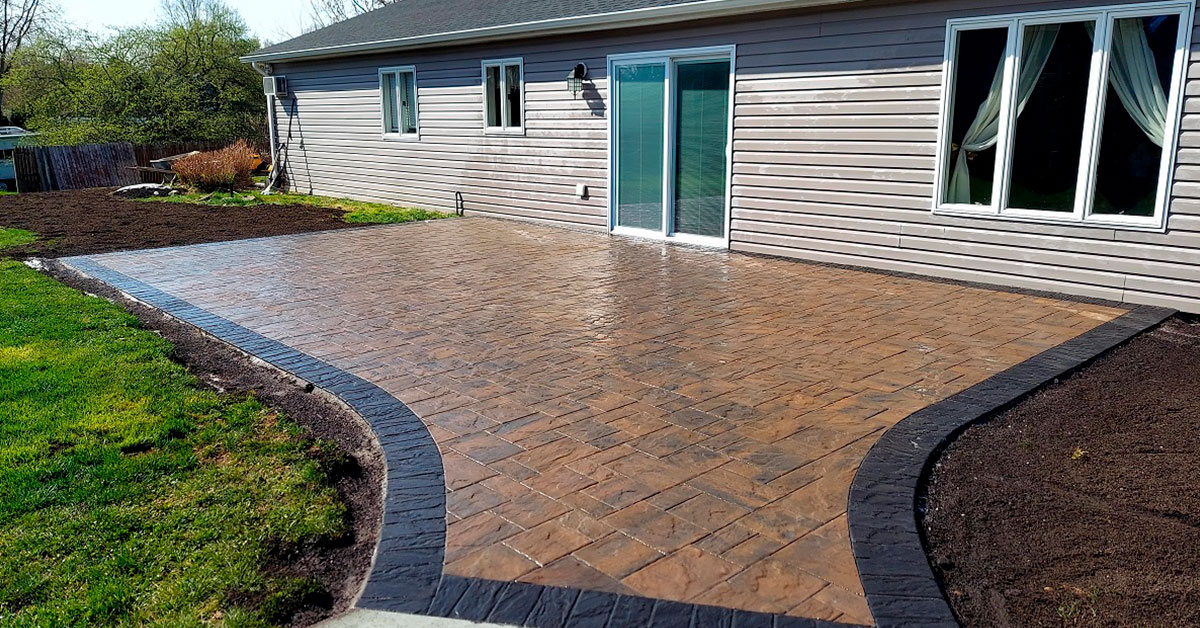Introduction
Are you considering adding a new patio to your Suffolk County home? Whether you’re dreaming of a cozy outdoor living space or a functional area for entertaining guests, a paver patio can significantly improve your property. But before you break out the tools, you may be wondering: Can you lay your own patio? Let’s weigh the pros and cons of DIY patio installation versus hiring a professional.
The DIY Approach: A Hands-On Experience
Installing your own patio can be a rewarding DIY project. It allows you to have complete control over the design and materials, and it can be a great way to save money. However, there are several factors to consider before taking on this task:
- Skills and tools: You’ll need a basic understanding of construction techniques and the right tools for the job.
- Time commitment: DIY patio installation can be time-consuming, especially for larger projects.
- Physical labor: Be prepared for a lot of physical labor, including digging, leveling, and laying pavers.
- Permits: Check with your local building department to ensure that you have the necessary permits.
Hiring a Professional: Peace of Mind and Expertise
Hiring a professional patio installer can save you time and effort. They have the experience and expertise to:
- Design: Create a custom patio design that complements your home and landscape.
- Materials: Source high-quality materials and ensure they are installed correctly.
- Installation: Complete the project efficiently and to the highest standards.
- Permits: Handle all necessary permits and inspections.
Factors to Consider When Making Your Decision
When deciding whether to DIY or hire a professional, consider the following factors:
- Budget: DIY projects can be more cost-effective, but unexpected costs can arise.
- Time: If you have limited time, hiring a professional may be the better option.
- Skills: Assess your own DIY skills and experience.
- Complexity: The size and complexity of your project will also impact your decision.
Conclusion
Whether you choose to install your own patio or hire a professional, the most important thing is to create an outdoor space that you’ll love. By carefully considering your options and weighing the pros and cons, you can make an informed decision that best suits your needs and budget.
Frequently Asked Questions
What tools and equipment do I need to install a paver patio myself?
Installing your own patio requires a specific set of tools and equipment. While the exact tools may vary depending on the size and complexity of your project, some essentials include a level, tamper, rubber mallet, string line, wheelbarrow, saw, shovel, and safety gear. It’s also crucial to have a solid understanding of basic construction principles and techniques.
How can I ensure that my DIY patio drains properly?
Proper drainage is essential for the longevity of your patio. To ensure proper drainage, consider the following:
- Slope: Create a slight slope away from your home to prevent water from pooling.
- Base: Install a compacted base of gravel or crushed stone to improve drainage.
- Joint sand: Use polymeric sand to fill the joints between pavers and prevent weeds while allowing water to pass through.
- Permeable pavers: Consider using permeable pavers, which allow water to seep through, reducing the risk of standing water.
What are some common mistakes to avoid when installing a DIY patio?
One of the most common mistakes DIYers make is not adequately preparing the base. Other common pitfalls include:
- Using the wrong type of sand: Using regular sand instead of polymeric sand can lead to weed growth and uneven settling.
- Not cutting pavers properly: Incorrectly cutting pavers can result in an uneven finish.
- Failing to compact the base: A poorly compacted base can cause the pavers to settle unevenly.
- Not sealing the pavers: Sealing your pavers protects them from stains and weathering.
4. How can I add a personal touch to my DIY patio? There are countless ways to personalize your DIY patio. Consider these ideas:
- Patterns: Experiment with different paver patterns to create a unique design.
- Inlays: Incorporate inlays, such as stepping stones or mosaics, for a custom look.
- Outdoor living features: Add features like a fire pit, outdoor kitchen, or water feature to enhance your outdoor living space.
- Lighting: Use outdoor lighting to create a warm and inviting atmosphere.
By carefully planning your project and following these tips, you can create a beautiful and functional patio that you’ll enjoy for years to come.



